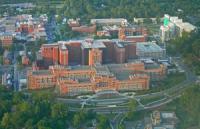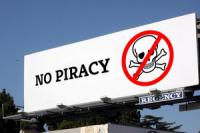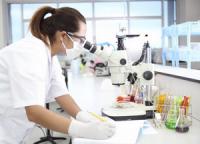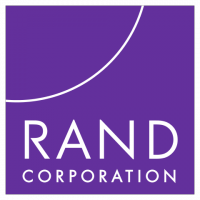-
Study: NIH funding generates large numbers of private-sector patents

Research grants issued by the National Institutes of Health (NIH) contribute to a significant number of private-sector patents in biomedicine, according to a new study. The study, published in the journal Science, examines twenty-seven years of data and finds that 31 percent of NIH grants, which are publicly funded, produce articles that are later cited by patents in the biomedical sector. “The impact on the private sector is a lot more important in magnitude than what we might have thought before,” says one of the researchers.
-
-
Aging U.S. scientific workforce raises concerns
The science and engineering workforce in the United States is aging rapidly, according to a new study. And it is only going to get older in coming years. Economists found that the average age of employed scientists increased from 45.1 to 48.6 between 1993 and 2010, faster than the workforce as a whole. The study estimates that, all else being the same, the average age of U.S. scientists will increase by another 2.3 years in the near future.
-
-
MIT president calls for investing in basic science to maintain U.S. edge
President Trump’s proposed budget slashes at least $7 billion in funding for science programs. That course of action would put the United States at a competitive disadvantage, argues L. Rafael Reif, president of the Massachusetts Institute of Technology (MIT). “Since World War II, the U.S. government has been the world’s biggest supporter of potentially transformative science — which is a key reason why the country continues to have the highest share of knowledge- and technology-intensive industries in the world, amounting to nearly 40 percent of the economy,” Reif writes in the May/June issue of Foreign Affairs.
-
-
NSF-funded research continues to support national security
The National Science Foundation (NSF) is usually associated with supporting scientists who go on to win Nobel Prizes, leading exploration of the planet’s polar regions, and enabling discoveries about the universe, from the subatomic world to distant galaxies. But the foundation also has ties to national defense that go back to its beginnings, as a product of the U.S. government working to enhance security during and after the Second World War. The National Science Foundation Act of 1950 called for the creation of an agency to “promote the progress of science; to advance the national health, prosperity, and welfare; and to secure the national defense.” NSF’s founder, Vannevar Bush, said: “It has become clear beyond all doubt that scientific research is absolutely essential to national security.”
-
-
Up to $600 billion in American intellectual property stolen annually

The theft of American intellectual property (IP) remains a systemic threat to the U.S. economy, inflicting an estimated cost that exceeds $225 billion in counterfeit goods, pirated software, and theft of trade secrets and could be as high as $600 billion annually. China remains the world’s principal IP infringer, driven by an industrial policy that continues to prioritize both acquisition and development of science and technology.
-
-
How science should respond to fake news
The rise of fake news has dominated the world of politics since the last U.S. election cycle. But fake news is not at all new in the world of science. “Fake news about science has always existed,” says one expert. “What has changed now is social media and the potential to disseminate this kind of news much faster among social networks.”
-
-
Concerns about science are unprecedented: AAAS president, CEO

Researchers are concerned at unprecedented levels about how a new presidential administration may undermine scientific work and delay its benefits, AAAS President Barbara Schaal and AAAS CEO Rush Holt said at a press event at the AAAS Annual Meeting. “It used to be when someone would say they were concerned about the state of science, they were talking about funding for research … these concerns about funding are not the ones being brought to me,” said Holt. “What I hear now are concerns about what I would call an ongoing trend that goes back many years, even decades, where ideology and ideological assertions have been crowding out evidence in public and private debates and policymaking.”
-
-
First Israeli nanosatellite launched
“BGUSAT,” the first nanosatellite for Israeli academic research, was launched Wednesday, 15 February as part of a collaboration between Ben-Gurion University of the Negev (BGU), Israel Aerospace Industries (IAI), and the Israel Ministry of Science, Technology and Space. It will provide researchers with data on climate change, agricultural developments, and other scientific phenomena. The nanosatellite is slightly larger than a milk carton (4x4x12 inches) and weighs only eleven pounds.
-
-
Center for Long-Term Cybersecurity unveils 2017 research grantees
The Center for Long-Term Cybersecurity (CLTC) has announce the recipients of its 2017 research grants. In total, twenty-seven different groups of researchers will share a total of nearly $1 million in funding. CLTC says that the projects span a wide range of topics related to cybersecurity, including new methods for making crypto-currencies more secure; protecting health information stored on mobile devices; teaching high-school computer science students how to “program for privacy”; and exploring potential limits on the use of digital controls in nuclear reactors.
-
-
Dual-use sciene, technological innovation
Scientific research can change our lives for the better, but it also presents risks – either through deliberate misuse or accident. Think about studying deadly pathogens; that’s how we can learn how to successfully ward them off, but it can be a safety issue too, as when CDC workers were exposed to anthrax in 2014 after an incomplete laboratory procedure left spores of the bacterium alive. Making decisions about the security implications of science and technology can be complicated. That’s why scientists and policymakers need clarity on the dual-use distinction to help consider our options.
-
-
Fortifying advanced manufacturing, save $100 billion annually by closing tech gaps
To spur significant innovation and growth in advanced manufacturing, as well as save over $100 billion annually, U.S. industry must rectify currently unmet needs for measurement science and “proof-of-concept” demonstrations of emerging technologies. This is the overall conclusion reached by economic studies of four advanced manufacturing areas used to create everything from automobile composites to zero-noise headsets.
-
-
S&T selects RAND Corp. to operate new DHS research center

DHS has selected the RAND Corporation to operate the Homeland Security Operational Analysis Center (HSOAC), which will conduct technical and operational research and analysis to aid the department. The new center is a federally funded research and development center, and is funded under a five-year contract worth as much as $494.7 million.
-
-
Sizable increase in U.S. R&D spending
U.S. research and development (R&D) performance rose to $477.7 billion in 2014 — an increase of $21.1 billion over the previous year — and is estimated to hit $499.3 billion in 2015. adjusted for inflation, growth in U.S. total R&D performance averaged 1.2 percent annually between 2008 and 2014, matching the average pace of U.S. gross domestic product (GDP).
-
-
Building a biosafety and biosecurity toolkit for a safer gene editing research
A new DARPA program could help unlock the potential of advanced gene editing technologies by developing a set of tools to address potential risks of this rapidly advancing field. The Safe Genes program envisions addressing key safety gaps by using those tools to restrict or reverse the propagation of engineered genetic constructs. Safe Genes was inspired in part by recent advances in the field of “gene drives,” which can alter the genetic character of a population of organisms by ensuring that certain edited genetic traits are passed down to almost every individual in subsequent generations.
-
-
Growing concern about amateur “biohackers” creating biological weapons
American and European security agencies have been increasingly focusing on the risk that “biohackers” – scientists who use genome-editing techniques to change life forms by increasing or decreasing the function of genes — could develop biological weapons or other dangerous biological substances. The problem is not only – or even mostly – with the work of professional scientists. Rather, the real danger lies with amateur scientists around the world who have started to use gene-editing techniques after the tools became cheap and readily available.
-
- All
- Regional
- Water
- Biometrics
- Borders/Immig
- Business
- Cybersecurity
- Detection
- Disasters
- Government
- Infrastructure
- International
- Public health
- Public Safety
- Communication interoperabillity
- Emergency services
- Emergency medical services
- Fire
- First response
- IEDs
- Law Enforcement
- Law Enforcement Technology
- Military technology
- Nonlethal weapons
- Nuclear weapons
- Personal protection equipment
- Police
- Notification /alert systems
- Situational awareness
- Weapons systems
- Sci-Tech
- Sector Reports
- Surveillance
- Transportation
Advertising & Marketing: advertise@newswirepubs.com
Editorial: editor@newswirepubs.com
General: info@newswirepubs.com
2010-2011 © News Wire Publications, LLC News Wire Publications, LLC
220 Old Country Road | Suite 200 | Mineola | New York | 11501
Permissions and Policies
Editorial: editor@newswirepubs.com
General: info@newswirepubs.com
2010-2011 © News Wire Publications, LLC News Wire Publications, LLC
220 Old Country Road | Suite 200 | Mineola | New York | 11501
Permissions and Policies
